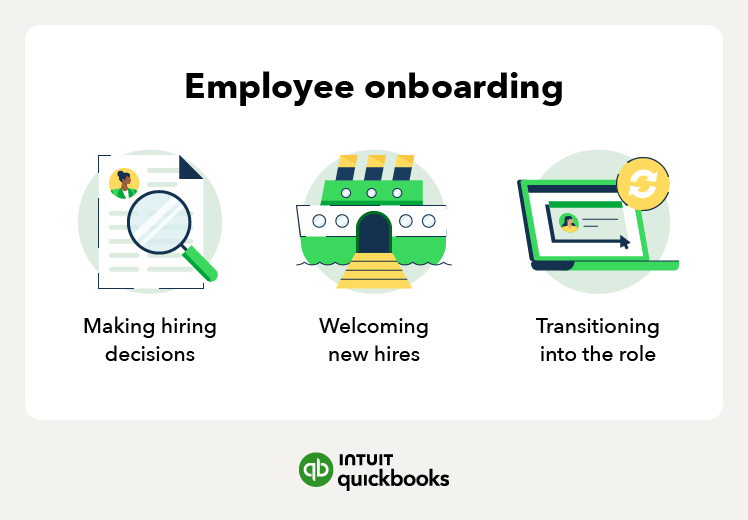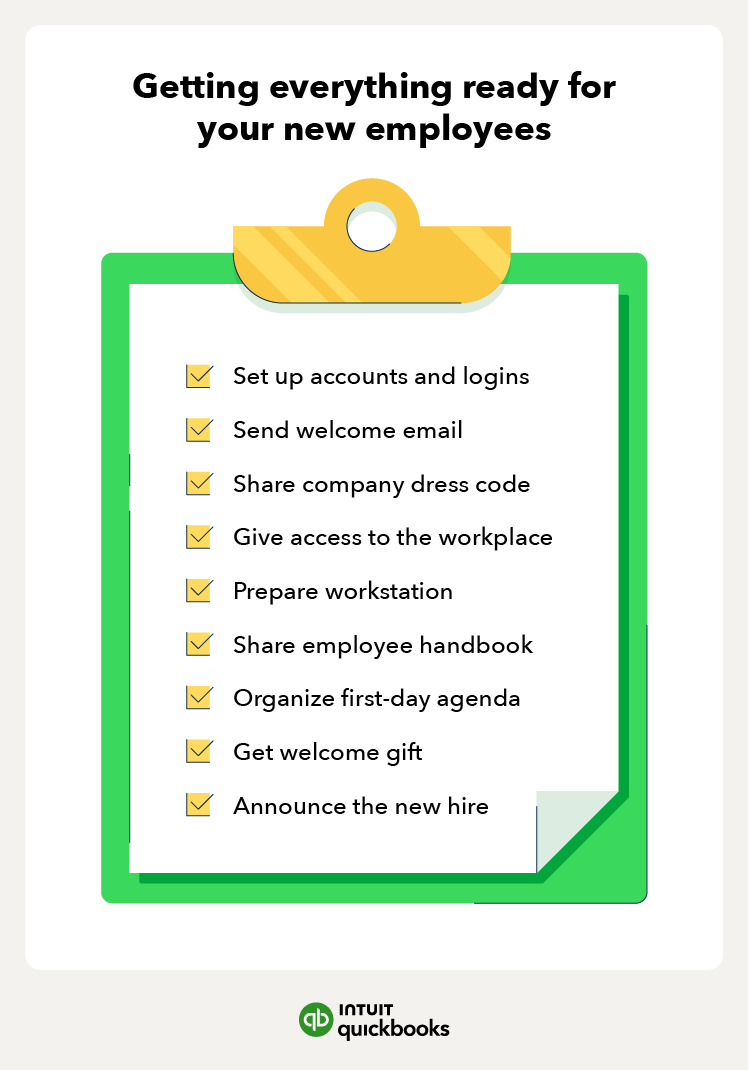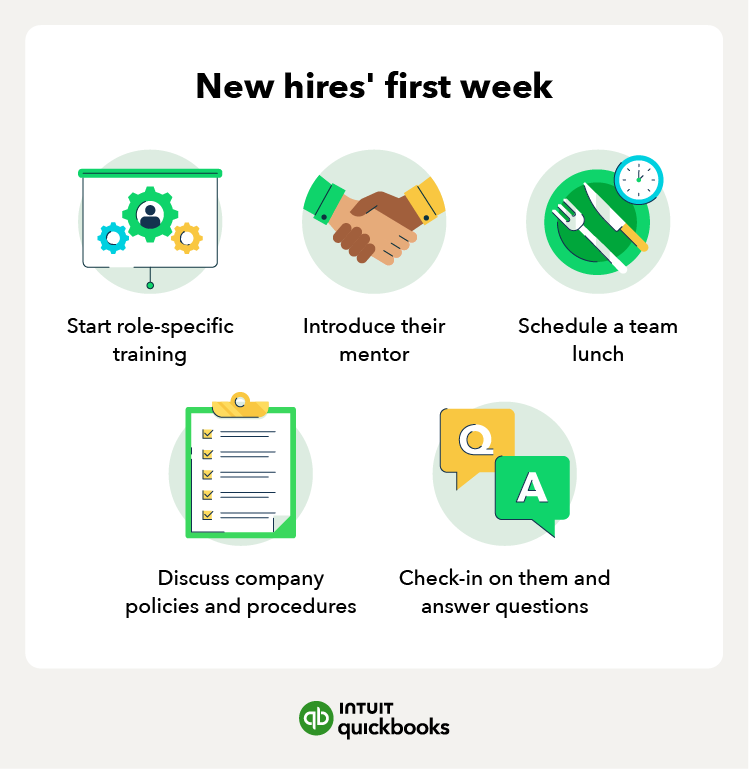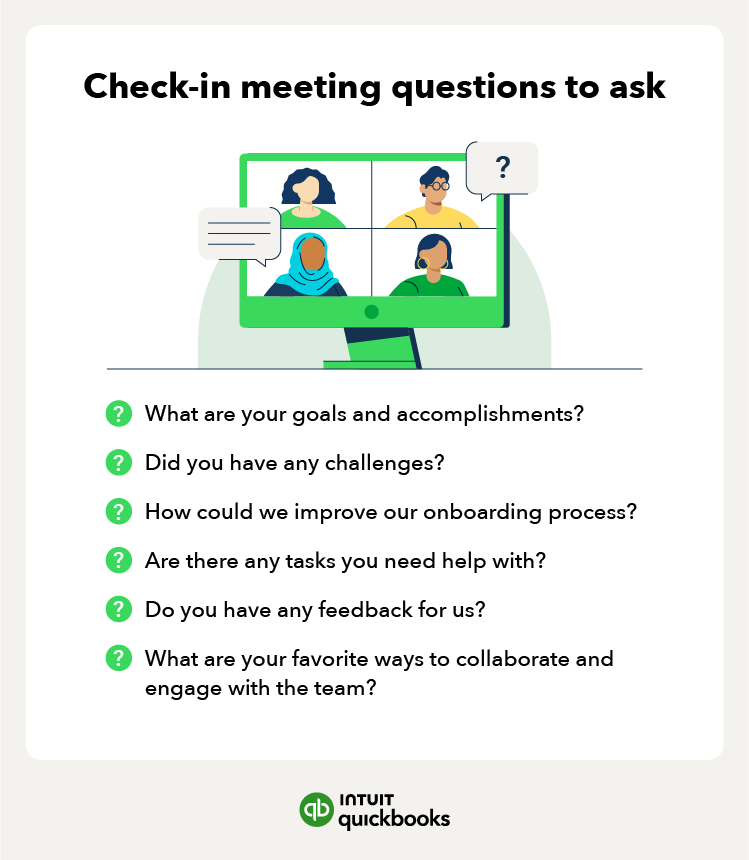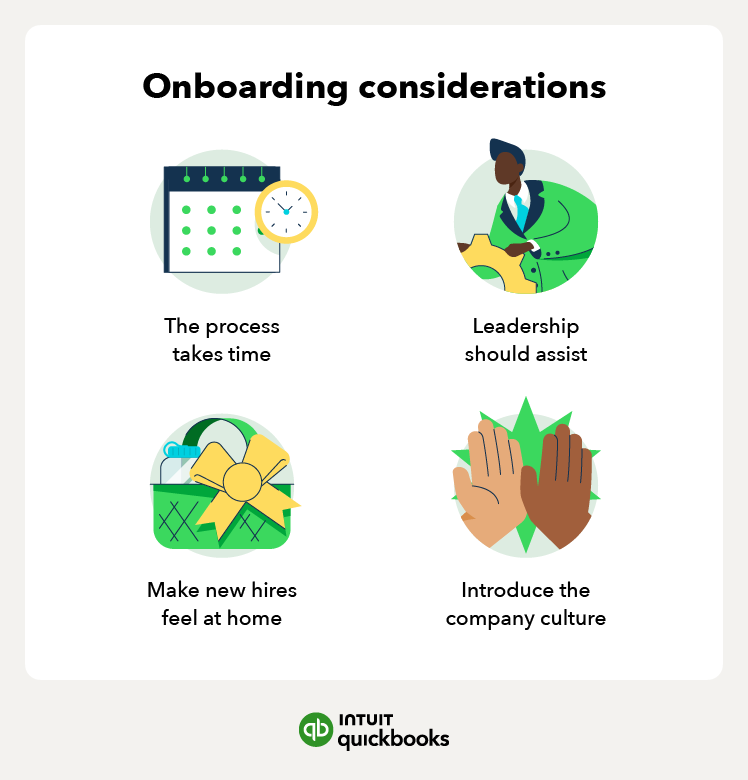1. Start before hiring
The onboarding process begins before your new employee steps foot in the building. A solid onboarding process supports your new employee from the moment they accept your job offer through their first year of employment.
Before bringing in a new employee, ensure your new hires receive up-to-date resources. Whether they want to know about your businesses policies or benefits, your team needs a reliable source of accurate information.
Here are the main topics to focus on for new hires:
- Outline company policies and consider creating an employee handbook.
- Give information about whether you offer health insurance and how to sign up for it.
- Settle a PTO policy and share it with new employees.
- Share additional opportunities like employee benefits.
- Make payment schedules and other financial information easy to access.
Planning before their arrival will help you transform the onboarding process into a smooth process for you and your new hire.
2. Create a seamless hiring process
Once you've picked your candidates, it's time to process their new hire paperwork. Signing this essential paperwork officially brings your new hire into the fold.
For this step, employers have to:
- Collect their emergency contact information.
- Get their banking information to set up direct deposit.
- Ensure all parts of your payroll systems are set up.
- Collect their benefits enrollment information.
- Send them an I-9, W-4, or other relevant tax forms.
Then have new hires fill out their paperwork before the start date. Once their signature is in, you can set up their workstation, job equipment, and logins for their first day.









